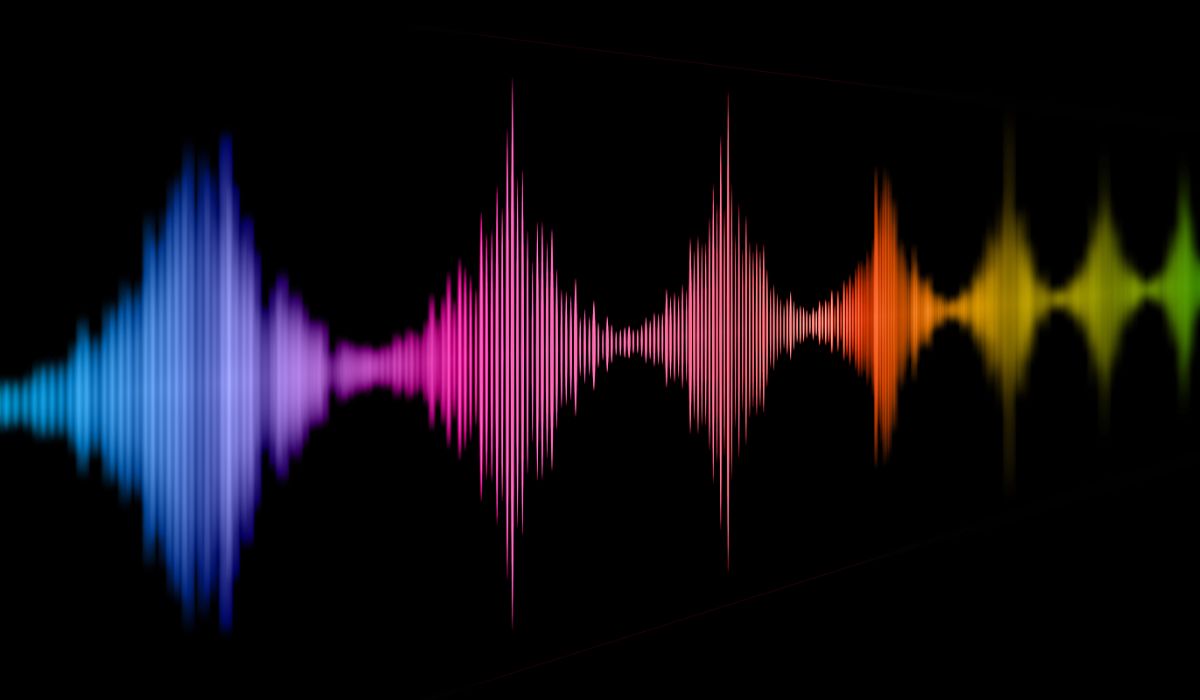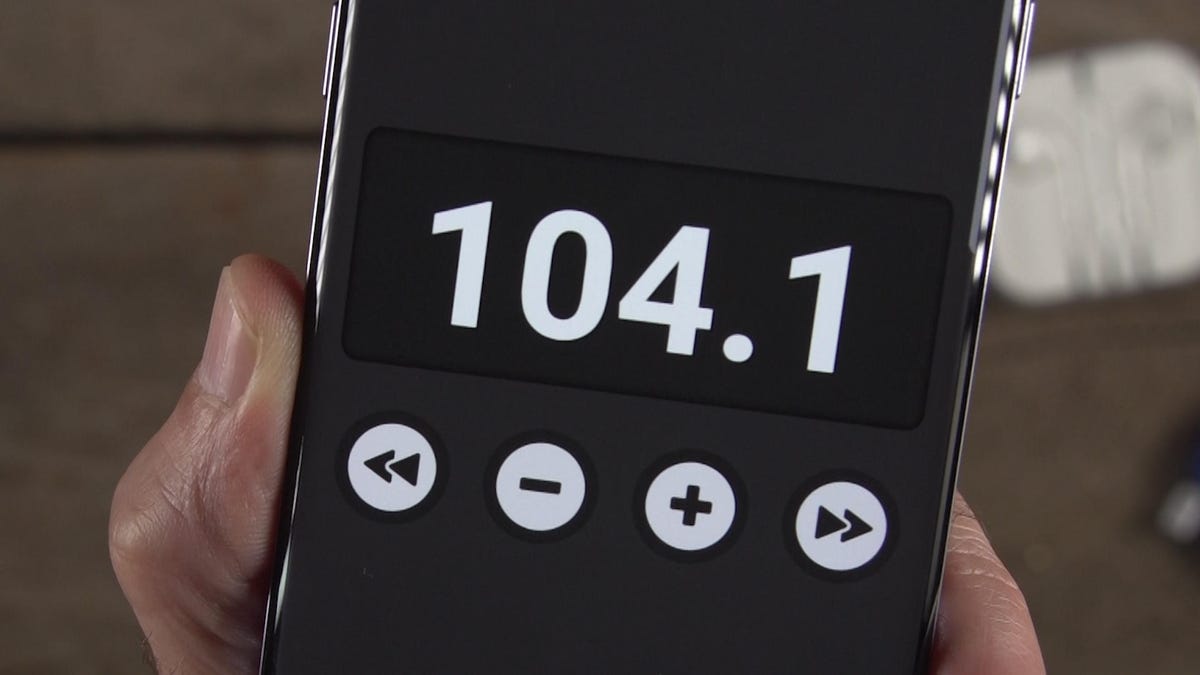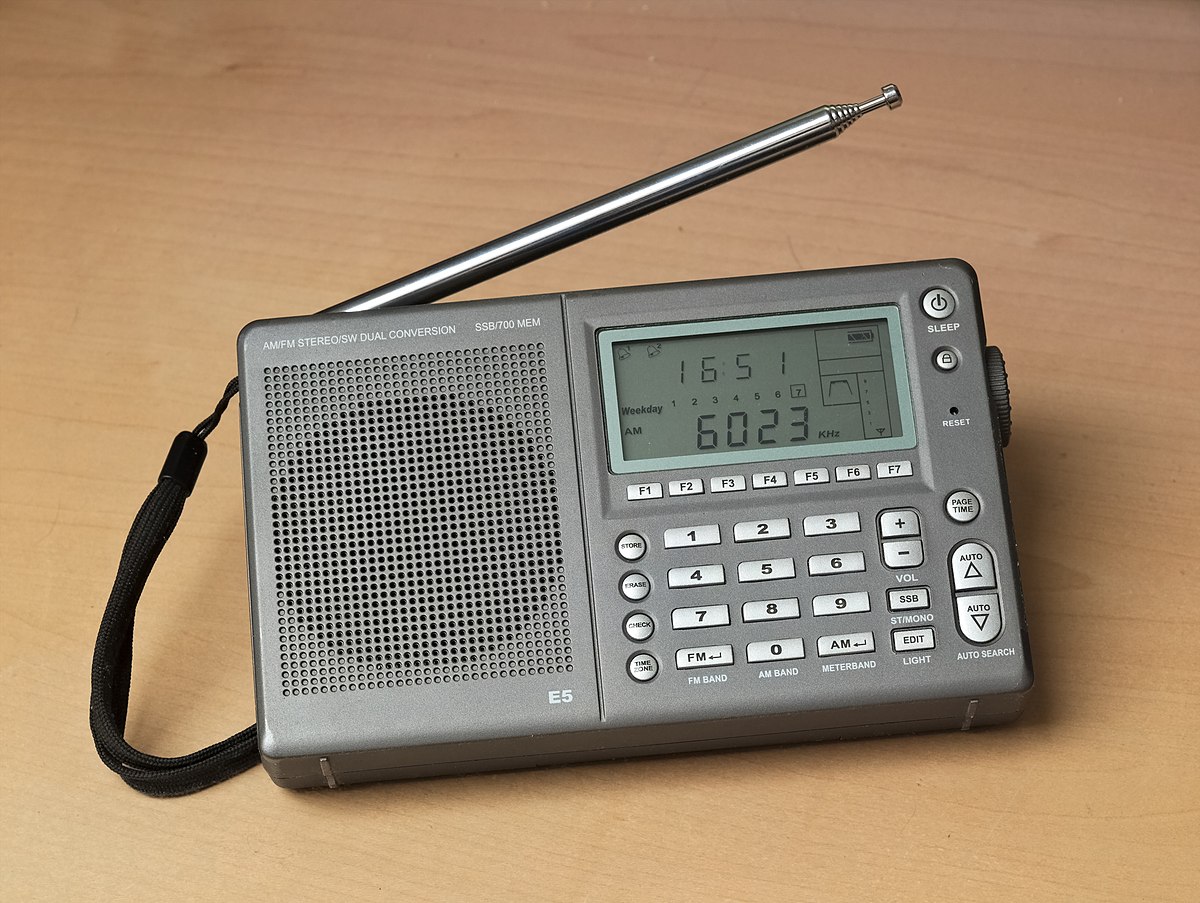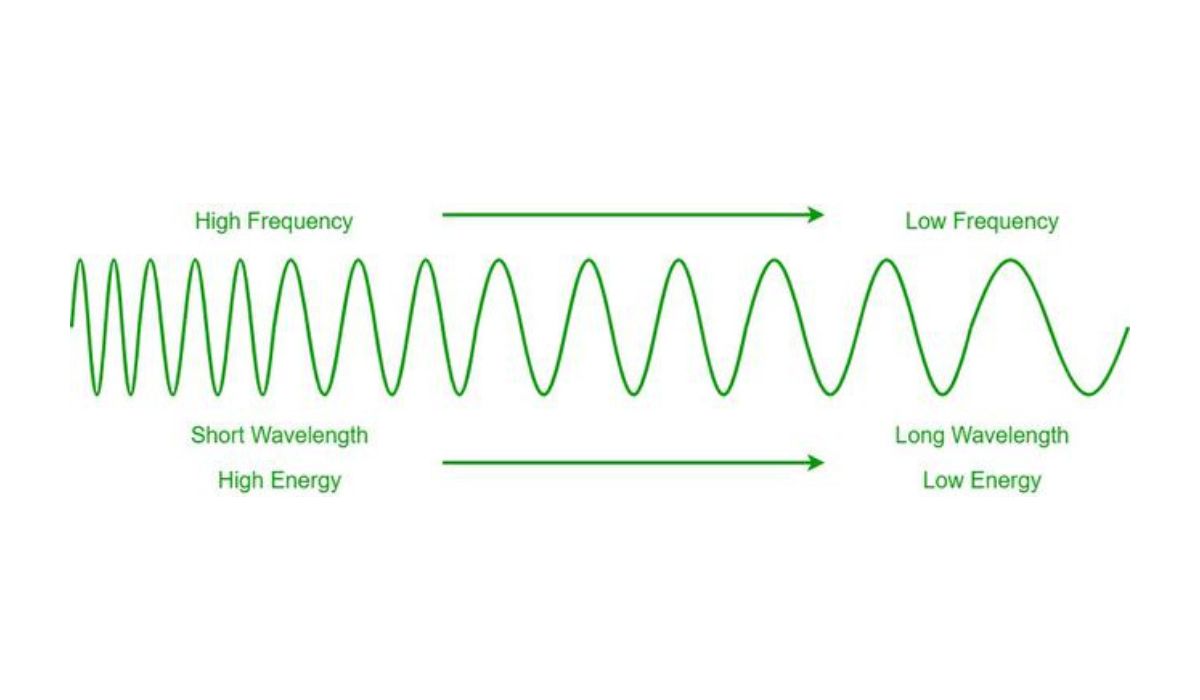Home>Devices & Equipment>Radio>What Are Radio Waves Used For?
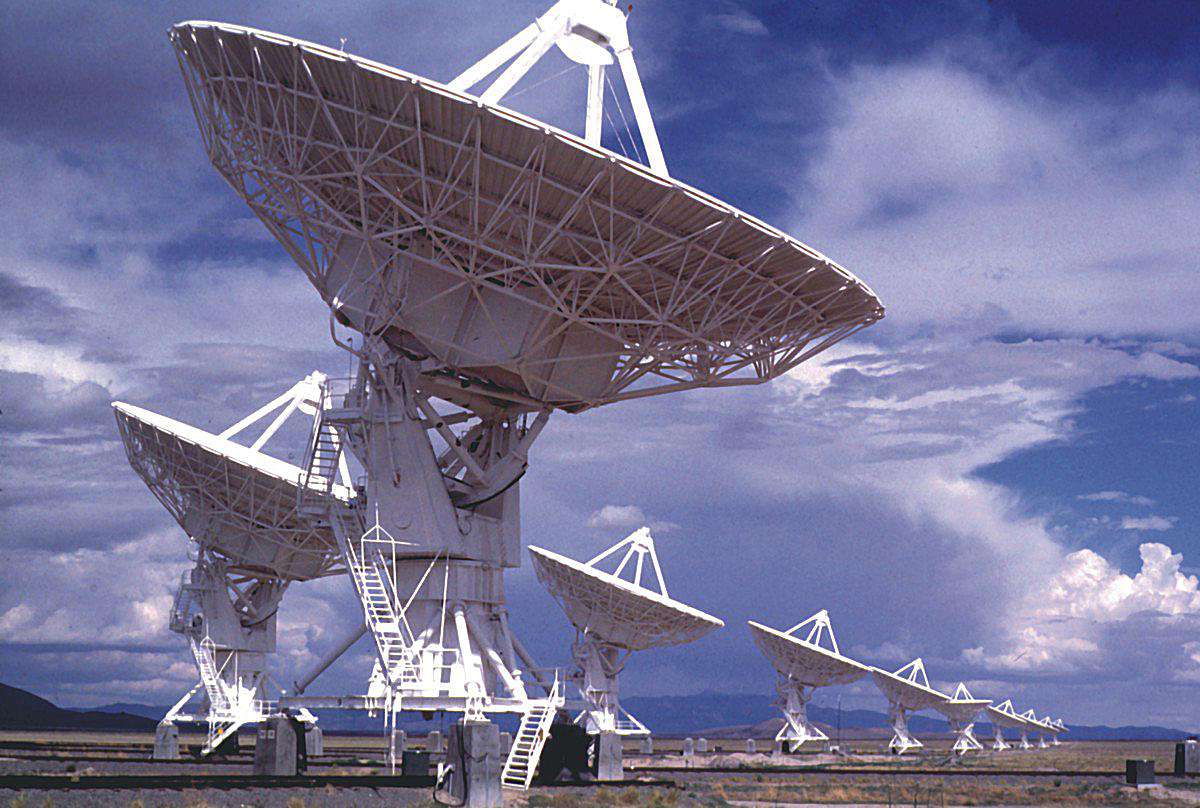

Radio
What Are Radio Waves Used For?
Modified: January 22, 2024
Discover the various uses of radio waves and how they revolutionize communication, broadcasting, and navigation in industries such as telecommunications, aviation, and healthcare.
(Many of the links in this article redirect to a specific reviewed product. Your purchase of these products through affiliate links helps to generate commission for AudioLover.com, at no extra cost. Learn more)
Table of Contents
Introduction
Welcome to the fascinating world of radio waves! These invisible electromagnetic waves have revolutionized communication, transformed entertainment, and impacted various industries. Radio waves are a form of electromagnetic radiation that have wavelengths ranging from a few millimeters to hundreds of kilometers. They are used in a wide array of applications, from broadcasting and wireless communication to medical diagnostics and remote sensing.
Radio waves were first discovered by James Clerk Maxwell in the 1860s and later confirmed by the experiments of Heinrich Hertz. Since then, radio technology has rapidly evolved, revolutionizing the way we connect with each other and receive information.
In this article, we will explore the basics of radio waves and delve into the myriad of ways in which they are utilized. We will discover how radio waves are employed in broadcasting, wireless technologies, medical applications, remote sensing, radar systems, and even the fascinating field of radio astronomy.
So, let’s embark on a journey through the captivating realm of radio waves, uncovering their uses and significance in our modern world.
Basics of Radio Waves
Radio waves are a type of electromagnetic radiation, characterized by their long wavelengths and low frequencies. They are a form of energy that travels through space at the speed of light.
Radio waves are produced by oscillating electric and magnetic fields, generated by various sources such as antennas, transmitters, and electronic devices. These waves can be transmitted and received by specialized equipment, such as radios and antennas.
The key elements that define a radio wave are frequency and wavelength. Frequency refers to the number of complete cycles or oscillations the wave completes in one second, measured in Hertz (Hz). The wavelength, on the other hand, is the distance between two consecutive points on the wave, usually measured in meters.
Radio waves span a wide range of frequencies, from very low frequency (VLF) waves used for communication with submarines, to extremely high frequency (EHF) waves used for satellite communication and radar systems.
Radio waves possess unique properties that make them suitable for long-distance communication. They can travel through the Earth’s atmosphere, bounce off the ionosphere, and be received by antennas located far away. This ability to propagate over vast distances allows for the transmission of signals across continents.
Understanding the properties of radio waves is essential for optimizing communication systems and ensuring reliable signal transmission. Factors such as interference, signal strength, and bandwidth allocation all play a crucial role in maintaining clear and efficient radio communication.
Now that we have a fundamental understanding of radio waves, let’s explore the diverse applications and uses of this remarkable form of electromagnetic radiation.
Communication Applications
One of the primary uses of radio waves is in communication. Radio waves are employed in a wide range of communication applications, including radio broadcasting, cellular networks, and two-way radio systems.
Radio broadcasting is a popular means of transmitting audio content to a large audience. AM (Amplitude Modulation) and FM (Frequency Modulation) radio stations utilize specific frequencies within the radio wave spectrum to transmit music, news, and other forms of entertainment. Listeners can tune their radios to the desired frequency and receive the broadcasted content.
Cellular networks, such as 3G, 4G, and 5G, also rely on radio waves for wireless communication. These networks use various frequencies to transmit data and enable voice calls between mobile devices. Radio wave technology allows for seamless connectivity on the go, facilitating instant communication and access to the internet.
Two-way radios, commonly used in public safety, transportation, and construction industries, also employ radio waves for communication. These handheld devices use specific frequencies to transmit and receive voice messages, enabling efficient and reliable communication between users within a limited range.
In addition to traditional communication systems, radio waves are also utilized in satellite communication. Satellites orbiting the Earth receive and transmit radio signals, allowing for long-distance communication across the globe. Satellite communication plays a crucial role in areas without access to terrestrial communication infrastructure, such as remote locations or during natural disasters.
Overall, radio waves are vital in facilitating communication on a global scale. Whether it is broadcasting information to the masses or enabling seamless wireless connectivity, radio wave technology has revolutionized the way we communicate and connect with each other.
Broadcasting
Broadcasting is one of the most significant applications of radio waves. It refers to the distribution of audio and visual content to a wide audience. Radio broadcasting, in particular, has played a pivotal role in shaping the entertainment and information landscape.
AM (Amplitude Modulation) and FM (Frequency Modulation) radio stations utilize specific frequencies within the radio wave spectrum to transmit programs. These programs can include music, news, talk shows, sports commentary, and much more.
AM radio stations use amplitude modulation, where the amplitude of the radio signal varies to convey the audio content. AM waves can travel long distances and are particularly useful for reaching rural areas or regions with geographical obstacles. However, they are susceptible to interference and noise.
FM radio stations, on the other hand, use frequency modulation. In FM, the frequency of the radio signal varies to encode the audio content. FM waves have superior sound quality compared to AM waves and are less prone to noise and interference. However, their transmission range is usually limited to a few tens of miles.
Radio broadcasting not only serves as a platform for entertainment but also plays a crucial role in disseminating important information. Radio stations provide news updates, emergency alerts, and public service announcements, ensuring that communities stay informed and connected.
In addition to traditional radio broadcasting, the rise of the internet has given birth to online radio stations and podcasts. These digital platforms utilize streaming technology to transmit audio content over the internet. This allows listeners to access a vast array of radio programs and podcasts from around the world, providing a rich and diverse listening experience.
Overall, radio broadcasting remains a powerful medium for entertainment, news, and information dissemination. The ability to reach a broad and diverse audience through radio waves continues to shape the way we consume media and stay connected in the modern age.
Wireless Technology
Wireless technology has become an integral part of our daily lives, enabling seamless communication and connectivity. Radio waves play a fundamental role in various wireless applications, making it possible for us to access information and stay connected regardless of location.
One of the most common forms of wireless technology is Wi-Fi (Wireless Fidelity). Wi-Fi networks use radio waves to transmit data over short distances. By connecting to a Wi-Fi network, users can access the internet, stream media, and communicate with other devices wirelessly. Wi-Fi has revolutionized the way we connect to the internet, allowing for flexibility and convenience in homes, offices, and public spaces.
Bluetooth is another wireless technology that utilizes radio waves. It enables the connection of devices, such as smartphones, laptops, and speakers, over short distances. Bluetooth allows for the seamless transfer of data, such as music files or phone contacts, between devices without the need for wires or cables.
Radio waves are also crucial in cellular networks. Mobile phones use radio wave frequencies to communicate with cellular towers, enabling voice calls, text messaging, and internet access. Whether it’s 3G, 4G, or the latest 5G technology, radio waves are the backbone of wireless communication, providing us with fast and reliable connectivity on our mobile devices.
In addition to Wi-Fi, Bluetooth, and cellular networks, radio waves are employed in other wireless technologies such as RFID (Radio Frequency Identification) and NFC (Near Field Communication). RFID tags use radio waves to transmit data, allowing for inventory management, access control, and tracking applications. NFC technology enables contactless payments and data transfer between devices, making transactions and information exchange more convenient.
The advancements in wireless technology, made possible by radio waves, have transformed the way we live and work. From staying connected wirelessly at home to accessing information on the go, radio wave technology continues to drive innovation and enhance our daily lives.
Medical Applications
The use of radio waves extends beyond communication and entertainment industries; it also plays a crucial role in various medical applications. From diagnostics to treatments, radio waves have revolutionized the field of medicine.
Magnetic Resonance Imaging (MRI) is a widely used medical imaging technique that relies on radio waves. By exposing the body to powerful magnetic fields and radio waves, an MRI machine produces detailed images of the internal organs and tissues. MRI scans are invaluable in diagnosing and monitoring a range of medical conditions, including tumors, musculoskeletal disorders, and neurological disorders.
Radiofrequency ablation is another medical procedure that utilizes radio waves. It involves the use of an electrode to generate high-frequency alternating currents that produce heat. This heat is then used to destroy abnormal tissue, such as tumors or abnormal heart cells. Radiofrequency ablation is commonly used in the treatment of certain types of cancers, cardiac arrhythmias, and chronic pain management.
Radiotherapy, or radiation therapy, is a key treatment modality in cancer care. It uses high-energy radiation, including X-rays and gamma rays, which are generated from linear accelerators or other radiation-emitting devices. These forms of radiation are effective in targeting and killing cancer cells while minimizing damage to healthy tissues. Radiotherapy plays a vital role in the treatment of various types of cancers, either as a standalone treatment or in conjunction with surgery or chemotherapy.
Non-invasive medical devices, such as pacemakers and insulin pumps, also rely on radio wave technology. These devices use radio waves to transmit data wirelessly, allowing healthcare professionals to monitor the patient’s condition and adjust treatment parameters remotely. Additionally, radio waves are used in wireless capsule endoscopy, where a small capsule with a camera is swallowed to capture images of the digestive system.
Radio waves also find applications in hyperthermia therapy, a treatment method that involves heating targeted tissues using electromagnetic radiation. This technique is used to treat certain types of cancer by selectively damaging cancer cells while preserving healthy tissues.
With the continuous advancements in medical technology, the use of radio waves in healthcare is likely to expand further. From imaging and diagnostics to therapeutic interventions, radio wave technology continues to play a pivotal role in improving patient outcomes and advancing medical care.
Remote Sensing
Remote sensing refers to the collection of data about the Earth’s surface from a distance, often using sensors mounted on satellites or aircraft. Radio waves play a crucial role in remote sensing, enabling the acquisition of valuable information about our planet’s land, oceans, and atmosphere.
One of the most common remote sensing techniques that utilize radio waves is radar (Radio Detection and Ranging). Radar systems emit radio waves and measure the time it takes for the waves to bounce back after hitting an object. By analyzing the returned waves, valuable information about the object’s location, size, and composition can be obtained. Radar is widely used for various applications, including weather monitoring, aircraft navigation, and mapping of the Earth’s surface.
Through radar remote sensing, scientists can study and monitor changes in the Earth’s surface, such as urban development, deforestation, and geological movements. Additionally, radar data is used for mapping coastlines, monitoring the movement of icebergs, and assessing the health of crops and vegetation.
Another application of remote sensing is satellite-based altimetry, which uses radio waves to measure the height of the Earth’s surface, including bodies of water like oceans and lakes. By analyzing the signals reflected from the surface, scientists can accurately determine the elevation of the terrain and monitor changes in sea levels. This information is vital for studying climate change, assessing coastal erosion, and understanding ocean currents.
Radio waves are also used in passive remote sensing techniques, where specialized sensors detect and measure naturally emitted or reflected electromagnetic radiation. Examples include the measurement of thermal radiation to study temperature patterns, and the detection of microwaves emitted by plants to assess vegetation health and moisture content.
Remote sensing plays a crucial role in various fields, including environmental monitoring, agriculture, disaster management, and urban planning. The ability to gather valuable data about the Earth’s surface from a distance provides scientists and decision-makers with valuable insights, aiding in better understanding and managing our planet’s resources.
Radar Systems
Radar (Radio Detection and Ranging) systems are widely used in various applications that require the detection, tracking, and imaging of objects and phenomena. These systems utilize radio waves to measure the distance, direction, speed, and other characteristics of targets in their vicinity.
One of the primary applications of radar systems is in aviation and aerospace. Air traffic control relies heavily on radar for tracking the position and movement of aircraft. Radar helps ensure safe separation between planes and provides vital information to pilots and air traffic controllers. It also plays a crucial role in weather monitoring by detecting precipitation, storms, and other atmospheric phenomena, allowing meteorologists to issue timely warnings.
Radar is also employed in military and defense applications. Military radar systems detect and track enemy aircraft, missiles, and ships, providing valuable situational awareness. These systems can identify and track targets even in adverse weather conditions or during the night, enhancing the effectiveness of defense strategies.
In the field of meteorology, weather radar is used to monitor and track precipitation patterns. By analyzing the radio waves reflected by raindrops or other forms of precipitation, meteorologists can gather information about the intensity, movement, and composition of weather systems. Weather radars are crucial in predicting severe storms, hurricanes, and other extreme weather events.
Radar is also utilized in automotive technology, particularly in advanced driver-assistance systems (ADAS) and autonomous vehicles. Radar sensors help detect surrounding objects, measure their distance and speed, and provide collision warnings. These systems enhance road safety by enabling adaptive cruise control, automatic emergency braking, and blind spot detection.
In addition to its practical applications, radar is used in scientific research. Astronomers use radio telescopes equipped with radar systems to study celestial bodies and phenomena. Radar astronomy allows for the investigation of planets, asteroids, comets, and the measurement of distances in the universe.
Radar systems continue to evolve with technological advancements, including the incorporation of synthetic aperture radar (SAR) for high-resolution imaging and the development of phased array radar systems for improved accuracy and flexibility. These advancements have expanded the capabilities of radar technology, enabling its use in a wide range of applications across multiple industries.
Radio Astronomy
Radio astronomy is a branch of astronomy that focuses on studying celestial objects and phenomena using radio waves. By detecting and analyzing radio emissions from distant objects in space, scientists can gain valuable insights into the structure, composition, and dynamics of the universe.
Unlike visible light, radio waves can penetrate through interstellar dust and gas, allowing astronomers to observe regions of space that are otherwise obscured in optical wavelengths. Radio telescopes are used to collect and detect faint radio signals emitted by celestial bodies.
Radio astronomy has played a crucial role in our understanding of the universe. It has been instrumental in the discovery of pulsars, which are rapidly rotating neutron stars that emit regular radio pulses. Radio observations have also been instrumental in identifying and mapping cosmic microwave background radiation, providing strong evidence for the Big Bang theory.
One of the significant contributions of radio astronomy is in the study of galaxies and their evolution. By observing the radio emissions from galaxies, astronomers can map out their distribution, study their magnetic fields, and detect the presence of active galactic nuclei and radio jets. Radio observations also help in identifying and studying distant galaxies, providing insights into the early stages of the universe.
Radio astronomy is also used to study interstellar molecules and the processes involved in the formation of stars and planetary systems. By detecting specific radio frequencies emitted by molecules in interstellar clouds, astronomers can analyze their composition, temperature, and density, shedding light on the complex processes of star formation.
Radio telescopes are often used in conjunction with other telescopes operating in different wavelengths, such as optical or X-ray telescopes. This multi-wavelength approach allows scientists to obtain a more comprehensive view of celestial objects and phenomena, providing a deeper understanding of the universe’s intricacies.
Advancements in technology have led to the development of large-scale radio interferometers, such as the Very Large Array (VLA) and the Square Kilometer Array (SKA). These arrays consist of multiple radio dishes or antennae working together to form a larger virtual telescope with improved sensitivity and resolution.
Radio astronomy continues to provide valuable contributions to our understanding of the cosmos. By exploring the universe through the unique perspectives offered by radio waves, astronomers are continually uncovering new insights and expanding our knowledge of the vastness and complexity of space.
Conclusion
Radio waves are more than just a means of communication and entertainment; they are a fundamental part of our modern world. From the basics of radio waves to their diverse applications, we have explored the significant role they play in our daily lives.
Radio waves enable seamless communication through broadcasting, cellular networks, and wireless technologies like Wi-Fi and Bluetooth. They connect us to the world, allowing us to access information, stay connected with loved ones, and enjoy entertainment at our fingertips.
But radio waves don’t just stop at communication. They have found their place in various industries and fields. In the medical realm, radio waves power diagnostic imaging technologies like MRI and are utilized in therapeutic treatments such as radiofrequency ablation and radiation therapy.
Furthermore, radio waves are at the heart of remote sensing, enabling scientists to study the Earth’s surface, track weather patterns, and monitor changes in the environment. Through radar systems, radio waves help in aviation, defense, and meteorology, providing valuable data for safety, defense strategies, and weather monitoring.
Radio waves have even cast their gaze into the depths of space, opening up the fascinating field of radio astronomy. By observing the radio emissions from celestial bodies, astronomers gain insights into galaxies, pulsars, interstellar molecules, and the history of the universe.
In conclusion, radio waves have become an inseparable part of our lives, driving advancements in communication, healthcare, remote sensing, and astronomy. Their versatility and utility have transformed industries, advanced our understanding of the world around us, and deepened our exploration of the cosmos.
As technology continues to evolve, we can look forward to even more innovative applications of radio waves, further expanding our capabilities and pushing the boundaries of what is possible in the realms of communication, science, and exploration.

